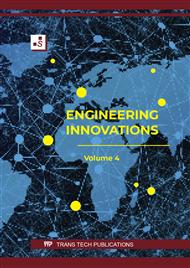p.1
p.9
p.15
p.21
p.31
p.37
p.47
Finite Element Analysis of Damage of Cylindrical Roller Bearing of Main Shaft of Shot Blasting Machine
Abstract:
The main shaft of shot blasting machine mainly uses cylindrical roller bearing as the supporting part. The influence of stress, strain and temperature on bearing damage was studied by thermal structural coupling analysis of the bearing through finite element simulation. The causes and main damage forms of bearing surface were verified by super depth of field observation and finite element analysis. It is found that there exists pyramidal strain in the contact area between inner and outer raceway and roller, and its distribution form is continuous point distribution. The stress concentration is mainly distributed in the contact area between the roller face and the retaining edge, and the roller temperature is more concentrated in the area near the end face. The maximum length and depth of spalling pit on racetrack surface were 572.2μm and 14.15μm respectively. The maximum width and depth of the scratches on the roller surface are 386.7μm and 10.7μm, and the damage degree of the roller surface is not uniform. The thermo-structural coupling analysis is used to simulate the running state of bearings, which is of guiding significance to analyze the failure forms of bearings and improve the service life of bearings.
Info:
Periodical:
Pages:
1-8
Citation:
Online since:
February 2023
Authors:
Permissions:
Share:
Citation:



